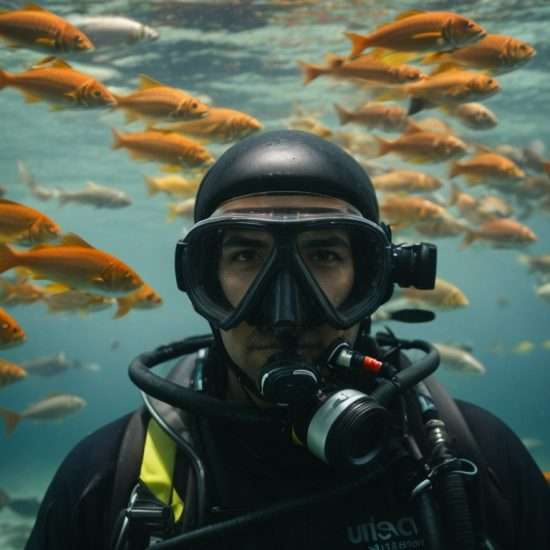Please ensure you have the following documents for your visa application:
- Passport: Make sure your passport has at least two blank pages and is valid for a minimum of 6 months beyond your planned departure from the Schengen territory. Include all previous passports as well.
- Personal Bank Statement / Company Bank Statement: Provide bank statements for the last six (06) months, either personal or company statements, depending on your circumstances.
- Recent Color Photographs: Include two (02) recent color photographs with a white background, measuring 35 mm X 45 mm. They should not be older than 03 months.
- Travel Health Insurance: Obtain travel health insurance that is valid for all Schengen countries, with a minimum coverage of 30,000 EUR for medical expenses.
For Business Persons:
- Renewal Trade License Copy
- Certificate of Incorporation and Memorandum of your Company (relevant pages with director’s names)
- Office pad / Company Letterhead Pad
- Import & Export Certificate (if applicable)
- TIN / Income Tax Certificate (if applicable)
For Job Holders:
- No Objection Certificate (NOC)
- Salary Certificate
- Pay slips (if applicable)
- G.O (Government Order) for Official Passport
- BMDC certificate for Doctors
- BAR council Certificate for Advocates
For Students:
- Student ID card photocopy
- Leave letter from school/college/university
If you have a sponsor, provide their documents:
- Passport copy
- Invitation Letter
- Tenancy agreement/lease agreement copy
- Bank statement copy (if possible)
- Professional documents copy (if possible)
Additional supporting documents may include:
- Tour Program
- Visiting card
- Marriage certificate
- Birth certificate of children
- Documents of properties
- Bluebook photocopy of the car (if any)
- Documents of other income
- All documents of financial solvency like FDR/Share business/other savings/Security Deposit/cash investment, etc.
- National Identity Card Copy
Please note:
- Embassy fee of BDT 8,500/- payable to the Embassy.
- Our service charge of BDT 3,000/- payable to us, along with travel health insurance.
- All visa processing fees are non-refundable.
- Visa information and charges are subject to change without prior notice.
- Ensure that any documents in Bengali are translated into English.
Please be aware that this information sheet is prepared by us and may contain additional details compared to the embassy requirements. It is essential to verify the updated visa information when submitting your application. While we provide assistance, we cannot guarantee visa approval.
Guidance for Tourists.
Capital City: Copenhagen
Local Time: GMT + 1
Telephone Code: + 45
Bank Time: Business hours in Denmark may vary. Generally, offices open between 8:00 to 10:00 am and close between 3:30 to 5:30 pm. Most businesses operate on a five-day schedule, typically closed on Saturdays and Sundays.
Currency: Danish Krone
Food:
The main food in Denmark reflects a combination of traditional Scandinavian cuisine and modern influences. Here are some notable dishes that are commonly enjoyed in Denmark:
- Smørrebrød: Open-faced sandwiches made with a variety of toppings such as pickled herring, smoked salmon, roast beef, liver pâté, and cheese. They are typically served on dense rye bread and garnished with fresh herbs.
- Frikadeller: Danish-style meatballs made with a mixture of ground pork and beef, onions, eggs, and breadcrumbs. They are often served with potatoes, gravy, and lingonberry sauce.
- Æbleskiver: These are round, pancake-like pastries often enjoyed during the Christmas season. They are typically filled with apple pieces and dusted with powdered sugar.
- Rugbrød: Traditional Danish rye bread, which is dark, dense, and packed with whole grains. It is often served as a base for smørrebrød or enjoyed with various toppings like butter, cheese, or cold cuts.
- Stegt flæsk med persillesovs: This dish consists of crispy fried pork belly slices served with a creamy parsley sauce, boiled potatoes, and pickled beets. It is a classic Danish comfort food.
- Danish pastries (Wienerbrød): These flaky and sweet pastries come in various shapes and flavors, such as cinnamon rolls (kanelsnegle), fruit-filled pockets, and custard-filled Danish (spandauer). They are popular for breakfast or as a treat with coffee.
- Grønlangkål: A traditional Danish dish made with kale, potatoes, and pork. The kale is slow-cooked with spices and served alongside boiled potatoes and tender pork.
- Flødeboller: Also known as chocolate-coated marshmallow treats, flødeboller are popular sweet snacks in Denmark. They consist of a fluffy marshmallow filling covered in a layer of chocolate and sometimes a crispy wafer base.
Transport:
Denmark offers a well-developed and efficient transportation system that makes it easy to get around. Here are the main modes of transport available in the country:
- Public Transportation: Denmark has an extensive network of buses, trains, and metro services that connect cities, towns, and regions. The public transportation system is reliable, comfortable, and well-maintained. Cities like Copenhagen, Aarhus, and Odense have comprehensive public transport networks, including buses, trains, and metro lines.
- Trains: The train network in Denmark is operated by DSB (Danish State Railways). It provides efficient and convenient transportation between major cities and towns. Trains are known for their punctuality and offer comfortable seating, onboard amenities, and scenic views, especially when traveling across the countryside.
- Buses: Buses are an essential mode of transport in Denmark, serving both urban and rural areas. They offer extensive coverage and connect smaller towns and villages that may not have direct train connections. Local buses are operated by various regional transport companies, ensuring accessibility throughout the country.
- Cycling: Denmark is renowned for its cycling culture, and biking is a popular mode of transport. Cities are well-equipped with dedicated cycling lanes and infrastructure, making it safe and convenient to navigate by bike. Many towns and cities provide bike-sharing services, and cycling is an excellent way to explore urban areas and enjoy the scenic countryside.
- Ferries: Denmark is composed of several islands, and ferries are an important means of transportation to reach these destinations. Ferries operate between mainland Denmark and islands like Zealand, Funen, Lolland, and Bornholm. They offer both passenger and vehicle transport services.
- Car Rental: Renting a car is an option for those who prefer to explore Denmark at their own pace and venture into more remote areas. The road infrastructure is well-maintained, and driving is relatively easy. However, keep in mind that parking in city centers can be limited and expensive.
- Airports: Denmark has several airports, including Copenhagen Airport, Billund Airport, and Aalborg Airport, which offer domestic and international flights. These airports serve as gateways to the country and provide convenient air travel options.
Hotel:
Finding the right hotel in Denmark is essential for a comfortable and enjoyable stay. Here are a few key points to consider when looking for a hotel:
- Location: Determine which city or region in Denmark you plan to visit and choose a hotel located conveniently within that area. Consider proximity to attractions, public transportation, and amenities you may need during your stay.
- Budget: Set a budget for your accommodation and look for hotels that fit within your price range. Denmark offers a range of accommodation options, from luxury hotels to budget-friendly guesthouses and hostels.
- Amenities and Services: Consider the amenities and services you desire in a hotel. This could include factors like free Wi-Fi, breakfast included, parking facilities, on-site restaurants, fitness centers, or spa facilities. Prioritize your preferences to find a hotel that meets your needs.
- Reviews and Ratings: Read reviews and check ratings of hotels to get an idea of the experiences of past guests. Websites such as TripAdvisor, Booking.com, and Expedia provide valuable insights and feedback from other travelers.
- Hotel Type: Decide on the type of hotel that suits your preferences. Options range from international chain hotels to boutique hotels, historic accommodations, or family-run guesthouses. Each offers a unique experience, so choose based on your personal preferences.
- Booking: Once you have identified a hotel that meets your criteria, make a reservation either directly with the hotel or through a reputable booking website. Pay attention to cancellation policies, payment methods, and any additional charges.
- Special Considerations: If you have specific requirements, such as accessibility needs or traveling with pets, ensure that the hotel can accommodate them. Contact the hotel directly to inquire about any special arrangements or facilities.
Place to Visit:
Denmark offers a range of captivating destinations to explore. Here are some popular places to visit in the country:
- Copenhagen: The capital city of Denmark is a vibrant metropolis known for its stunning architecture, historic sites, and lively atmosphere. Must-visit attractions include the iconic Little Mermaid statue, the colorful Nyhavn harbor, the Tivoli Gardens amusement park, and the famous Christiansborg Palace.
- Aarhus: Located on the Jutland peninsula, Aarhus is Denmark’s second-largest city and offers a mix of modern attractions and cultural heritage. Explore the ARoS Aarhus Art Museum, visit the open-air museum of Den Gamle By (The Old Town), and stroll along the charming streets of the Latin Quarter.
- Odense: Known as the birthplace of renowned fairy tale author Hans Christian Andersen, Odense is a charming city with a rich cultural heritage. Discover the Hans Christian Andersen Museum, explore the picturesque old town, and visit the beautiful Odense Cathedral.
- Skagen: Located at the northern tip of Jutland, Skagen is a picturesque coastal town famous for its unique light that has attracted many artists over the years. Enjoy the beautiful beaches, visit the Skagen Museum, and witness the breathtaking meeting point of the North and Baltic Seas.
- Roskilde: Just a short distance from Copenhagen, Roskilde is a historic city known for its impressive Viking Ship Museum, where you can see well-preserved Viking vessels. Additionally, visit the grand Roskilde Cathedral, a UNESCO World Heritage site.
- Legoland Billund: Ideal for families and Lego enthusiasts, Legoland Billund is a popular theme park offering an array of thrilling rides, entertaining shows, and impressive Lego constructions. Explore the different themed areas and enjoy the interactive experiences.
- Bornholm: Denmark’s easternmost island, Bornholm, boasts beautiful landscapes, charming coastal villages, and medieval ruins. Discover the Hammershus Castle Ruins, relax on the sandy beaches, and explore the idyllic countryside.
Population: 5.857 million
Religion: Christianity has a significant presence in Denmark, with 72% of the population registered as members of the Evangelical Lutheran Church. However, the majority of Danes do not consider themselves to be “very religious,” accounting for less than a fifth of the population. Despite this, the influence of Christianity on Danish culture is evident, as traditional churches can be found scattered throughout the Danish countryside.

